Fine lines and wrinkles under the eyes are among the earliest signs of skin aging, often appearing long before other facial features show similar changes. This delicate area is naturally thinner and more vulnerable to environmental damage, stress, sleep deprivation, and the natural decline in collagen production. As such, selecting the best cream for lines under eyes is not just a cosmetic decision, but one rooted in dermatological science and mental well-being. With the ever-expanding array of skincare products available, navigating which ingredients work, which are hype, and what truly promotes healthier skin can be challenging. For those looking to make an informed choice, understanding the biology of skin aging, the evidence behind active ingredients, and the psychological benefits of effective skincare is essential.
You may also like: How to Choose Skin Care for Fine Lines: Evidence-Based Tips for Healthier, Younger-Looking Skin
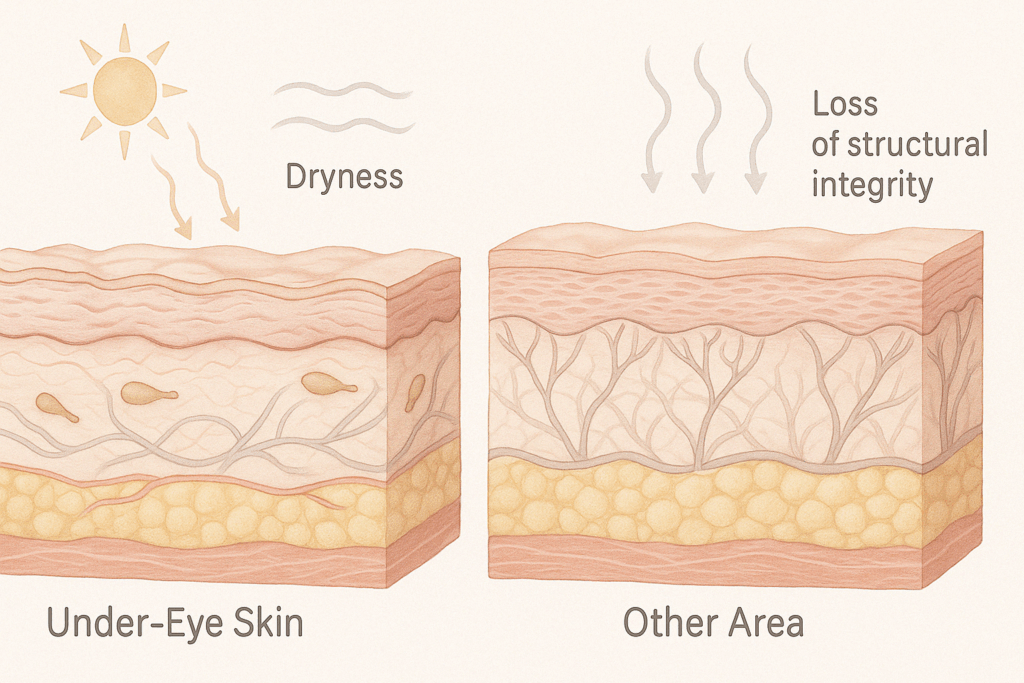
The Physiology of the Under-Eye Area: Why It Ages Faster
The skin beneath the eyes is notably different from the rest of the face. It is approximately 40% thinner, lacks the oil glands found elsewhere, and has less subcutaneous fat. These factors collectively make it more susceptible to dehydration, volume loss, and dynamic wrinkles caused by repetitive facial movements like squinting or smiling. Over time, the skin’s natural repair processes slow, leading to collagen and elastin degradation, which are key structural proteins that maintain firmness and elasticity.
Furthermore, external stressors such as UV radiation, pollution, and blue light exposure can accelerate oxidative stress in skin cells. This not only damages DNA but also impairs the skin’s barrier function, making it more prone to inflammation and dryness. The loss of hydration further emphasizes fine lines, giving the skin a crepey texture. To choose the best cream for lines under eyes, it’s essential to select products designed specifically to target these unique anatomical vulnerabilities. Generic moisturizers may not adequately address the underlying causes of under-eye aging, making targeted formulations far more effective.
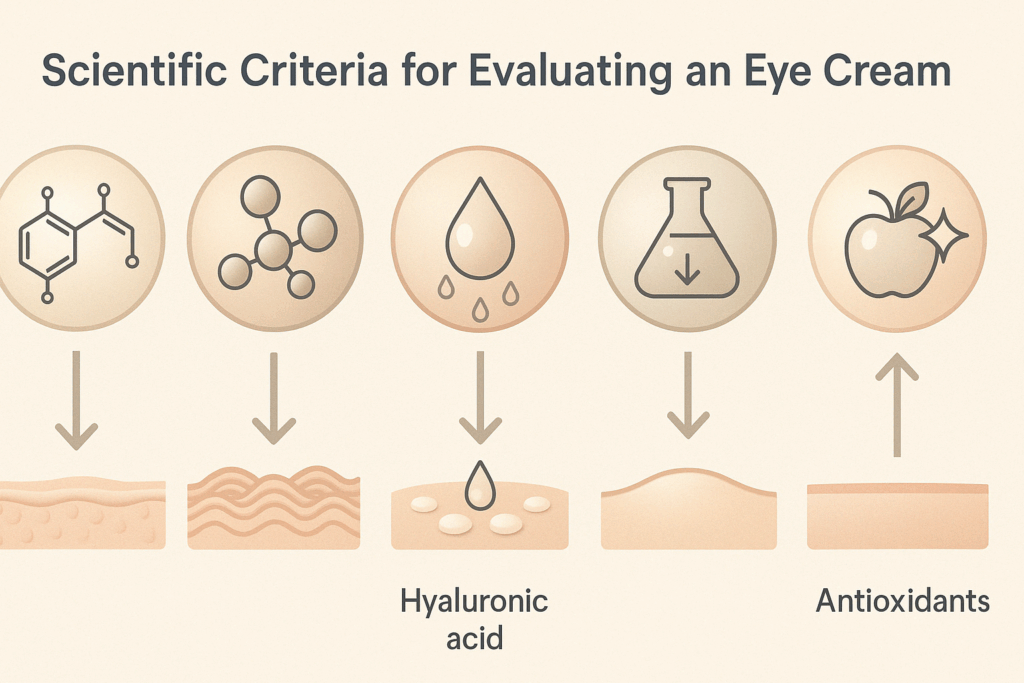
Scientific Criteria for Evaluating an Eye Cream
An effective cream under eyes should be backed by clinical evidence and incorporate ingredients with proven efficacy in peer-reviewed dermatological studies. While marketing terms like “anti-aging,” “firming,” or “youth-enhancing” are widespread, consumers must look beyond the branding and focus on the science. Key questions to consider include: Has the product undergone independent clinical testing? Are the active ingredients present in concentrations shown to be effective in scientific literature? What delivery mechanisms are used to ensure the ingredients penetrate the delicate under-eye skin without causing irritation?
In dermatology, the quality of evidence supporting a product matters. Ingredients like retinol, peptides, niacinamide, hyaluronic acid, and antioxidants such as vitamin C and E have demonstrated consistent efficacy in improving fine lines and promoting collagen synthesis. However, the form in which these ingredients are delivered (e.g., encapsulated retinol, low molecular weight hyaluronic acid) significantly impacts their absorption and effectiveness. For individuals with sensitive skin, selecting a cream under eyes that balances potency with gentleness is crucial to avoid dermatitis or inflammation that can worsen the appearance of aging.
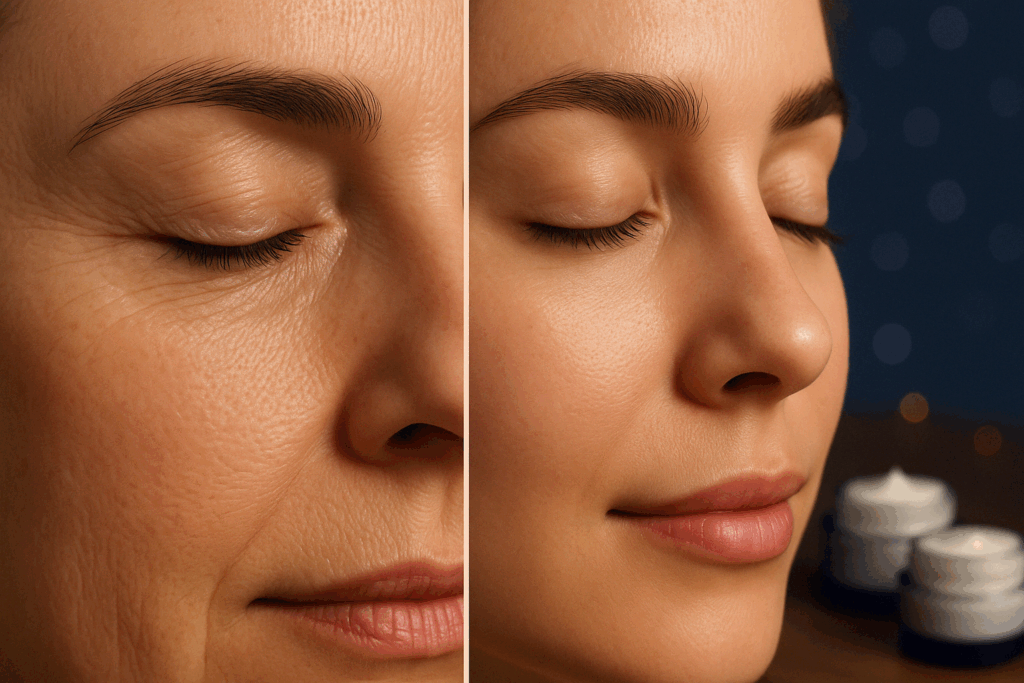
Retinoids: The Gold Standard—But Handle With Care
Among dermatologists, retinoids are considered the gold standard in treating signs of aging, including under-eye lines. These vitamin A derivatives work by accelerating cell turnover and promoting collagen production. Retinol, a less potent over-the-counter form of retinoid, is commonly found in eye creams designed for sensitive areas. Clinical studies have shown that consistent use of low-dose retinol can visibly reduce fine lines and wrinkles over a period of 12 weeks.
However, not all skin types tolerate retinoids well. The under-eye area, being particularly fragile, may respond with redness, peeling, or dryness. Therefore, selecting a formulation that combines retinol with soothing ingredients such as panthenol, ceramides, or allantoin can help mitigate these effects. For individuals new to retinoids, dermatologists recommend starting with a cream under eyes that includes microencapsulated or time-released retinol to reduce irritation. Additionally, using retinoids only at night and pairing them with a daytime SPF product is essential to prevent photosensitivity.
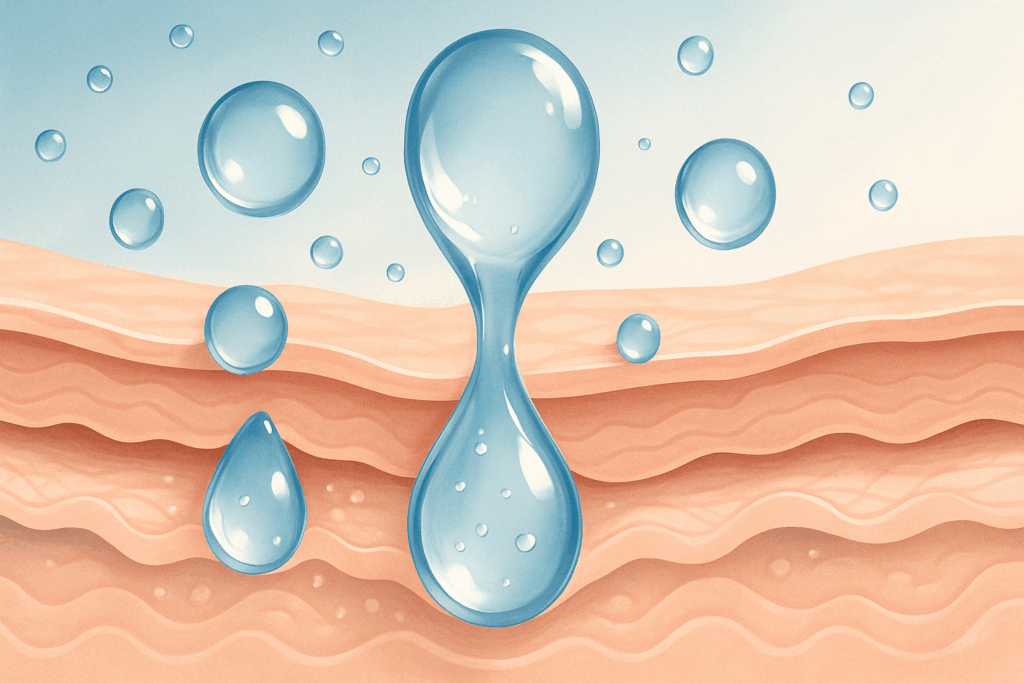
Hydration as a Foundation for Anti-Aging
Regardless of age or skin type, hydration remains a cornerstone of healthy skin, particularly in the under-eye region. A well-formulated eye cream should include humectants that attract water into the skin and emollients that lock it in. Hyaluronic acid, especially in its low molecular weight form, has the ability to penetrate deeper layers of the dermis and retain up to 1,000 times its weight in water. This plumping effect helps minimize the appearance of fine lines caused by dehydration.
Glycerin and urea are also powerful humectants that are less likely to cause sensitivity than some botanical extracts. When choosing the best cream for lines under eyes, look for products that combine multiple types of moisturizers to support both immediate and long-term hydration. Moreover, barrier-repairing ingredients like squalane, fatty acids, and cholesterol mimic the skin’s natural lipid profile and are essential for preventing transepidermal water loss. These components not only improve moisture retention but also reinforce the skin’s defenses against environmental aggressors.
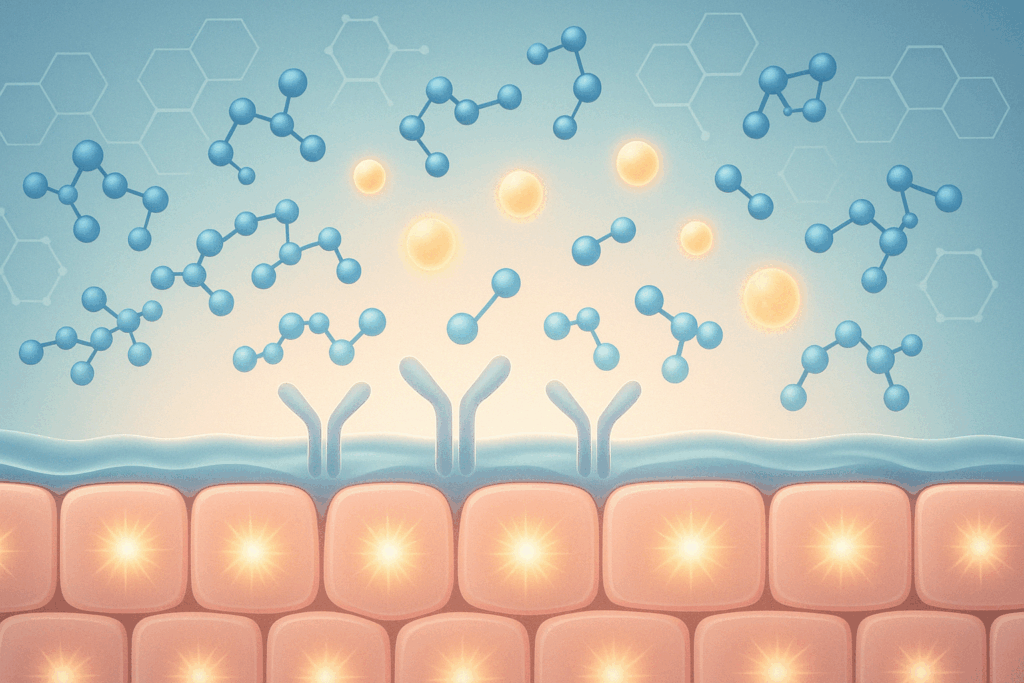
Peptides and Growth Factors: Cellular Communication and Skin Repair
Peptides are short chains of amino acids that serve as signaling molecules, instructing skin cells to produce collagen, elastin, and other structural proteins. They have become increasingly popular in formulations targeting fine lines, particularly in the under-eye area where collagen production has declined. Some peptides, such as Matrixyl (palmitoyl pentapeptide), have been studied extensively and are known to stimulate extracellular matrix production without the irritation associated with retinoids.
Growth factors, often derived from human stem cells or bioengineered sources, are another category of active ingredients that promote skin regeneration. While more expensive, eye creams that incorporate growth factors have been shown to reduce wrinkle depth and improve skin thickness in clinical trials. For those seeking advanced options, combining peptides and growth factors in a single cream under eyes may offer synergistic benefits. However, individuals with autoimmune conditions or sensitive skin should consult a dermatologist before use, as some biologically active compounds can trigger inflammatory responses.
Antioxidants: Protection Against Oxidative Stress
Oxidative stress is a major contributor to skin aging, particularly in exposed areas like the under-eye region. Free radicals generated by UV light, air pollution, and even blue light from digital devices can degrade collagen and damage skin cells. Antioxidants neutralize these free radicals, reducing inflammation and preventing further degradation of skin structure. Vitamin C, especially in the form of L-ascorbic acid, is a potent antioxidant that also supports collagen synthesis and brightens pigmentation.
Other valuable antioxidants include vitamin E, ferulic acid, coenzyme Q10, and green tea polyphenols. When selecting a cream under eyes, look for stabilized antioxidant formulations, as these compounds are often unstable and degrade quickly when exposed to air and light. Packaging in opaque, airless pumps or single-use capsules can enhance product longevity and effectiveness. While antioxidants are not an instant fix, their long-term use helps preserve skin health and prevent new lines from forming.
Niacinamide: A Multitasking Dermatological Ally
Niacinamide, a form of vitamin B3, has gained significant attention for its wide-ranging dermatological benefits. It enhances the skin’s barrier function, improves elasticity, reduces redness, and lightens hyperpigmentation—all without the irritation common to more aggressive ingredients. In the context of under-eye care, niacinamide can help diminish the appearance of dark circles while also smoothing fine lines by strengthening the skin and improving its texture.
Studies have shown that using 5% niacinamide consistently over several weeks can lead to a visible reduction in wrinkle depth and surface roughness. Its compatibility with other active ingredients makes it a valuable addition to multi-tasking eye creams. For individuals who find retinol too irritating, niacinamide may serve as an effective alternative or complementary component. It also enhances the effectiveness of other treatments by improving skin permeability and reducing transepidermal water loss.
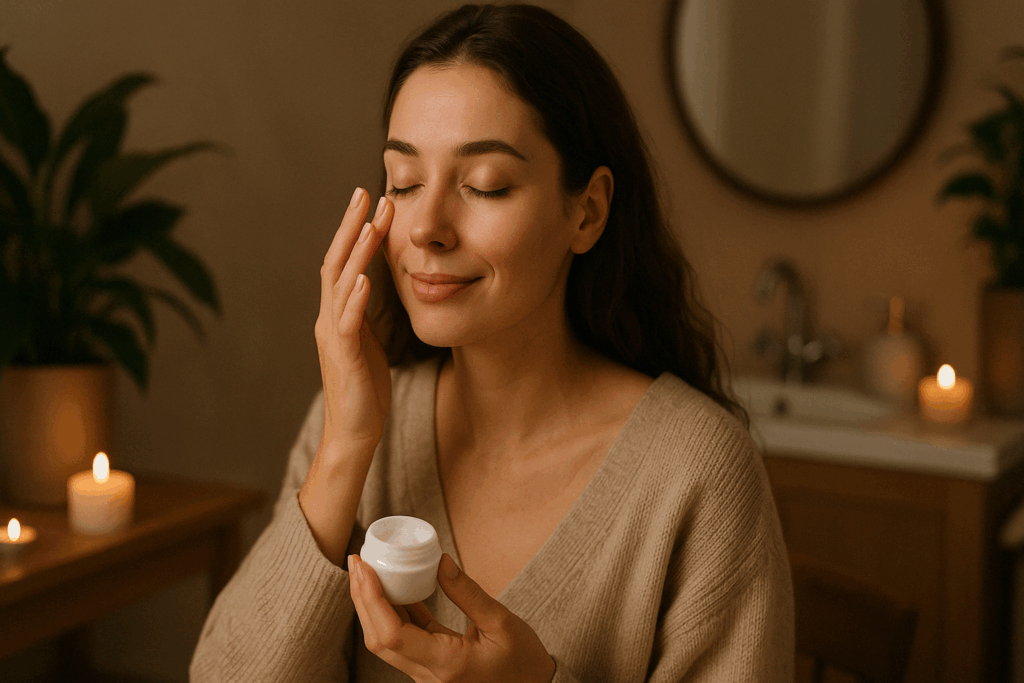
Understanding the Role of Mental Well-Being in Skin Care
While the physiological aspects of skin aging are well documented, the psychological dimension is equally important. The under-eye area is intimately associated with expressions of fatigue, stress, and age. Research in psychodermatology—a field that examines the interaction between skin and mental health—suggests that visible skin improvements can significantly boost self-esteem and emotional well-being. In this context, investing in a cream under eyes that yields noticeable results may offer more than cosmetic value.
Individuals with a consistent skincare regimen often report a greater sense of control, self-care, and emotional resilience. This is particularly important for those experiencing age-related identity shifts or body image concerns. A scientifically effective under-eye cream thus contributes not only to smoother skin but also to enhanced psychological well-being. It reinforces routines that prioritize health, balance, and self-respect, which are essential components of holistic wellness.
Decoding Labels: Avoiding Irritants and Marketing Traps
Not all eye creams are created equal, and understanding what to avoid is as important as knowing what to seek. Fragrances, alcohols, and certain essential oils can be irritating to the sensitive under-eye area. Products that list these ingredients among the first few on their labels are best avoided, especially for individuals with reactive skin or underlying dermatologic conditions like eczema or rosacea.
Moreover, terms like “hypoallergenic,” “dermatologist-tested,” or “natural” have no standardized definitions and can be misleading. Instead of relying on vague claims, scrutinize the ingredient list and look for evidence-based actives. When possible, choose brands that publish results from clinical trials or are recommended by board-certified dermatologists. An informed consumer is less likely to fall for products that overpromise and underdeliver.
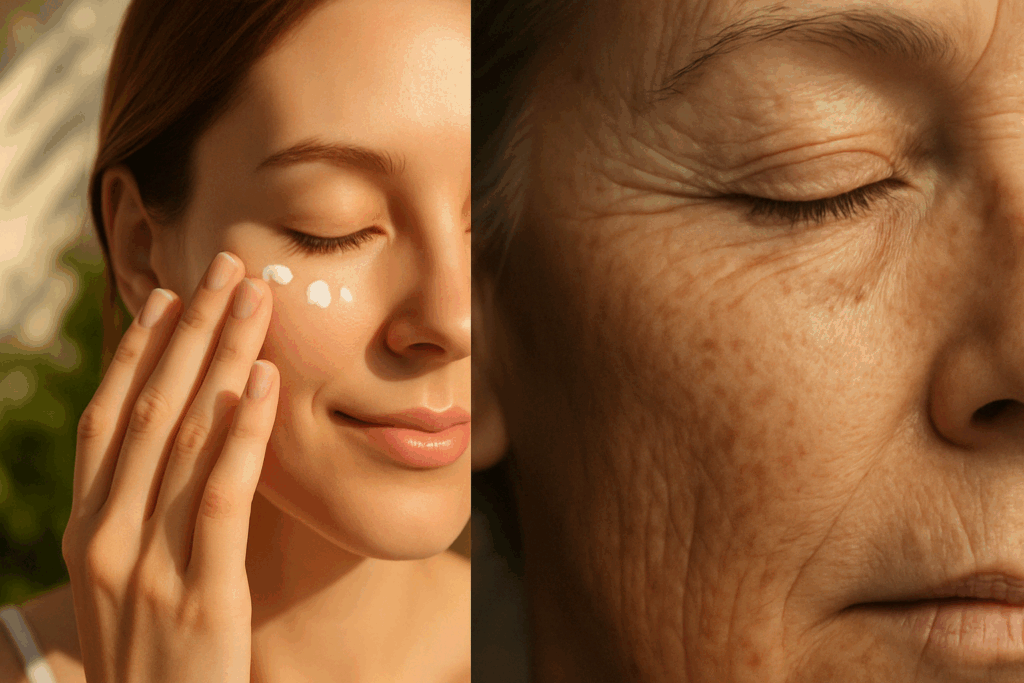
SPF: The Underrated Cornerstone of Eye Care
No matter how advanced or expensive an eye cream may be, its benefits can be undone by sun exposure. Ultraviolet radiation remains the most significant extrinsic factor in skin aging, particularly in areas with minimal melanin protection like the under-eye region. A complete eye care regimen must include the use of sunscreen around the eyes—either as a standalone product or as an integrated component of the eye cream.
Modern formulations have addressed previous concerns about eye irritation from sunscreens. Mineral-based options using zinc oxide or titanium dioxide are generally well-tolerated and effective. Selecting a broad-spectrum SPF 30 or higher and applying it daily can preserve the results achieved through other treatments. Without this step, even the best cream for lines under eyes cannot reach its full potential, as continuous UV exposure will perpetuate collagen breakdown and pigmentation changes.
Consistency and Lifestyle: Making the Most of Your Skincare Investment
While ingredients and formulation matter, the effectiveness of any skincare product—including those targeting fine lines under the eyes—ultimately depends on consistent use. Sporadic application, overuse, or pairing with incompatible products can reduce efficacy or lead to side effects. Dermatologists recommend applying eye cream twice daily, with gentle tapping motions that avoid tugging at the delicate skin.
Complementing topical care with healthy lifestyle choices is equally crucial. Adequate sleep, stress management, hydration, and a balanced diet rich in antioxidants all support skin repair and resilience. Avoiding smoking and excessive alcohol consumption also helps maintain skin elasticity and reduce inflammation. These habits enhance the benefits of a high-quality cream under eyes, creating a synergistic effect that reinforces both physical and emotional health.
Frequently Asked Questions: Choosing the Best Cream for Lines Under Eyes
1. Can lifestyle habits influence how effective a cream under eyes will be?
Absolutely. Even the best cream for lines under eyes will struggle to show noticeable results if used in isolation from a healthy lifestyle. Factors such as chronic sleep deprivation, smoking, poor hydration, and excessive alcohol consumption directly affect skin elasticity, hydration levels, and overall tone. A cream under eyes can help improve hydration and stimulate collagen, but the body’s internal environment also plays a crucial role in healing and maintenance. For optimal outcomes, users should pair their skincare regimen with adequate sleep, a balanced diet rich in antioxidants, and stress-reduction practices such as mindfulness or light exercise.
2. Is there a difference between day and night formulations of under-eye creams?
Yes, there is a significant difference, and it’s worth paying attention to. Day creams for under the eyes often include ingredients like antioxidants and SPF to protect the skin from UV and environmental damage. In contrast, the best cream for lines under eyes designed for night use tends to focus on repair and regeneration, featuring ingredients like retinol, peptides, or growth factors that are photosensitive or work best overnight. Using a product not suited for the time of day can reduce its effectiveness or, worse, cause irritation or photosensitivity. A dual-product approach may seem like more effort, but it often yields superior long-term results.
3. How does long-term screen exposure impact the need for a cream under eyes?
Blue light emitted from screens can accelerate oxidative stress, particularly in the under-eye area, which is already vulnerable due to thinner skin and minimal natural protection. Over time, this can lead to premature fine lines, hyperpigmentation, and increased dryness. A well-formulated cream under eyes that includes antioxidants such as niacinamide, vitamin C, or resveratrol may help counteract some of these effects. Additionally, using screen filters and adjusting ambient lighting can help reduce strain. It’s increasingly common for the best cream for lines under eyes to include blue-light-specific protection as part of their formulation.
4. Are there emotional or psychological benefits to using a cream under eyes regularly?
Absolutely, and they’re often underestimated. The act of applying the best cream for lines under eyes each morning or evening can become a grounding, self-care ritual that supports emotional resilience. This habit promotes consistency and mindfulness, both of which can have calming, meditative effects. More importantly, visible improvements in the skin can enhance self-esteem and reduce self-consciousness, particularly for individuals navigating aging-related identity changes. While results are gradual, this simple skincare routine may contribute to better mental health and emotional balance over time.
5. Can men benefit equally from using a cream under eyes for fine lines?
Definitely. While marketing traditionally targets women, the physiological makeup of men’s skin—though typically thicker and oilier—still faces aging concerns like collagen loss, dehydration, and sun damage. In fact, because many men are less likely to use sunscreen or moisturizers consistently, they may experience earlier signs of aging around the eyes. A high-quality cream under eyes tailored to men’s needs, or even a unisex formula, can significantly improve skin texture, reduce puffiness, and diminish fine lines. Encouragingly, more skincare brands are now formulating the best cream for lines under eyes that explicitly address the needs of all genders.
6. How should you store your eye cream to maintain its effectiveness?
Storage conditions significantly impact the stability and longevity of active ingredients. Many compounds in a cream under eyes—such as vitamin C, retinol, and peptides—are light-sensitive and degrade quickly when exposed to air, light, or heat. To preserve potency, store your product in a cool, dry place away from direct sunlight. For sensitive formulas, consider keeping them in a mini skincare fridge, which can enhance the soothing effect when applied. Packaging also matters; airless pumps or opaque tubes are ideal for maintaining the integrity of the best cream for lines under eyes.
7. Is it safe to layer multiple products with a cream under eyes?
Layering can be effective but must be done with intention and caution. Some active ingredients, such as retinol and alpha hydroxy acids, may not interact well and could increase the risk of irritation when used together. When layering with a cream under eyes, it’s best to apply lighter, water-based serums first, followed by heavier creams to lock in moisture. Always allow each product to absorb before applying the next. For individuals using prescription treatments like topical tretinoin, consulting with a dermatologist is essential to ensure compatibility with even the best cream for lines under eyes.
8. What innovations are emerging in under-eye skincare formulations?
Recent innovations in under-eye skincare include biomimetic peptides, stem-cell-derived growth factors, and microencapsulation technologies that enhance ingredient delivery. Many of the best cream for lines under eyes now use encapsulated retinol or time-release formulas that reduce irritation while extending the product’s effectiveness throughout the night. Some brands are even exploring neuropeptides that temporarily relax muscle contractions, mimicking the effects of Botox in a topical form. Additionally, DNA repair enzymes and exosome-based therapies are under research for their potential to reverse oxidative and UV damage. These breakthroughs are reshaping how we define an advanced cream under eyes.
9. Can diet and supplements improve the effectiveness of a cream under eyes?
Yes, internal nutrition plays a synergistic role with topical skincare. A diet rich in vitamins A, C, E, and omega-3 fatty acids can enhance skin’s natural regeneration, hydration, and elasticity. Supplements like collagen peptides, hyaluronic acid, and zinc can also contribute to improved under-eye skin quality. While the best cream for lines under eyes can deliver powerful results externally, internal support can accelerate those benefits and prolong their effects. However, it’s important to consult a healthcare provider before beginning any supplement regimen to ensure safe and personalized usage.
10. What should you do if your current cream under eyes isn’t showing results?
If results are minimal after consistent use for at least 8 to 12 weeks, it may be time to reevaluate the product’s formulation or how it’s being applied. The best cream for lines under eyes should align with your skin type and primary concerns—hydration, firmness, or pigmentation. In some cases, combining topical products with in-office treatments like microneedling or low-level laser therapy may enhance absorption and efficacy. Additionally, consider whether external factors like sun exposure, stress, or sleep are counteracting the product’s benefits. Switching to a more potent, evidence-backed formula—or consulting a board-certified dermatologist—can help you recalibrate and refine your skincare strategy.
Final Thoughts: Choosing the Best Cream for Lines Under Eyes for Long-Term Skin and Mental Wellness
Ultimately, selecting the best cream for lines under eyes involves more than choosing a popular brand or chasing the latest trend. It requires an understanding of skin physiology, scientific evidence, and individual needs. A truly effective product will combine clinically proven ingredients—such as retinol, peptides, niacinamide, antioxidants, and hyaluronic acid—with a formulation designed for safety, absorption, and long-term use.
This decision also intersects with mental and emotional well-being. As the under-eye area often reflects fatigue and aging, improving its appearance can have measurable psychological benefits, including improved self-image and mood. A quality cream under eyes thus becomes part of a broader wellness strategy that values consistency, informed choices, and the pursuit of both outer beauty and inner confidence. In an age where self-care is increasingly linked to mental health, investing in evidence-based skincare isn’t vanity—it’s a commitment to holistic well-being.
Was this article helpful? Don’t let it stop with you. Share it right now with someone who needs to see it—whether it’s a friend, a colleague, or your whole network. And if staying ahead on this topic matters to you, subscribe to this publication for the most up-to-date information. You’ll get the latest insights delivered straight to you—no searching, no missing out.
Further Reading:
How To Choose the Right Eye Cream
A review of the efficacy of popular eye cream ingredients
How to Prevent Fine Lines Under Your Eyes
Disclaimer
The information contained in this article is provided for general informational purposes only and is not intended to serve as medical, legal, or professional advice. While Health11News strives to present accurate, up-to-date, and reliable content, no warranty or guarantee, expressed or implied, is made regarding the completeness, accuracy, or adequacy of the information provided. Readers are strongly advised to seek the guidance of a qualified healthcare provider or other relevant professionals before acting on any information contained in this article. Health11News, its authors, editors, and contributors expressly disclaim any liability for any damages, losses, or consequences arising directly or indirectly from the use, interpretation, or reliance on any information presented herein. The views and opinions expressed in this article are those of the author(s) and do not necessarily reflect the official policies or positions of Health11News.